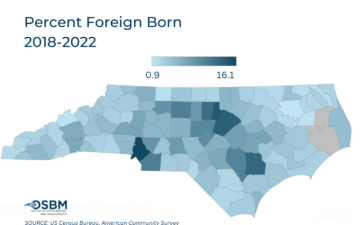Since 2011, the Center for Galapagos Studies (CGS) has marshalled the University of North Carolina at Chapel Hill’s research strengths to address the complex human and environmental pressures in the Galapagos archipelago, a UNESCO World Heritage Site and birthplace of evolutionary science.
The archipelago’s growing local population and burgeoning tourism trade have created ongoing tensions between resource conservation efforts and economic development. In 2007, the Galapagos Islands were labeled “at risk” by the United Nations from threats associated with population growth.
UNC and their partners at the Universidad San Francisco de Quito (USFQ) work on a series of studies to address the social and ecological stability of the Galapagos Islands.
In 2013, Ron Rindfuss, the Robert Paul Ziff Distinguished Research Professor of Sociology at the University of North Carolina at Chapel Hill, asked Carolina Demography to develop population projections to better understand the potential impacts of tourism on the Galapagos Islands, as well as the long-term sustainability of tourism development.
After conducting a literature review, we acquired and cleaned demographic and tourism-related data. We then created six population projections based on different growth models that took historic trends, state government goals, and potential development strategies into account.
The results were presented to the President of the Galapagos Islands, other members of the state government, and members of the Galapagos National Park and Ministry of Tourism during a presentation on the potential impacts of tourism on long-term population growth and sustainability in the Galapagos Islands.
“Everybody was really happy with the results and my feeling is that they will want more of this type of study,” said a collaborator on the project.
Center for Galapagos Studies
To develop six population projections to better understand the potential impacts of tourism

Last week, the U.S (United States). Census Bureau released 2023 county population estimates. These annual estimates tell us how county populations in North Carolina have changed over the course of a year: in this case, between July 1, 2022 and…

Deciding which educational pathway to pursue is often a daunting decision for a high schooler transitioning to postsecondary education. There are many questions a student must ask. Do I want to pursue a credential or a degree awarding program? What…

Dr. Michael Cline is the state demographer for North Carolina at the Office of State Budget and Management and has given us permission to re-post his content here. The original version of this piece is here. The foreign-born population in…
Your support is critical to our mission of measuring, understanding, and predicting population change and its impact. Donate to Carolina Demography today.